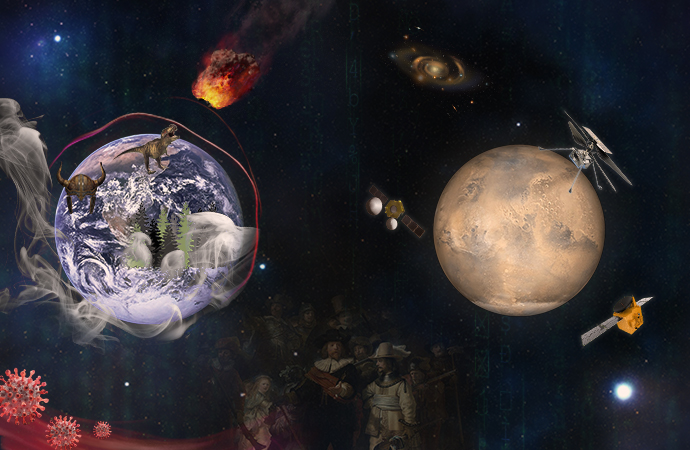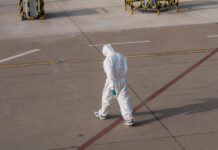I. Impactful IPCC 2021 report on climate change
The International Panel on Climate Change (IPCC) gathers over 200 experts who volunteer to examine thousands of scientific articles and summarize crucial findings on the climate and its impact on communities. In summer 2021, they issued a new report on climate change status, including possible future scenarios and recommendations for policymakers.
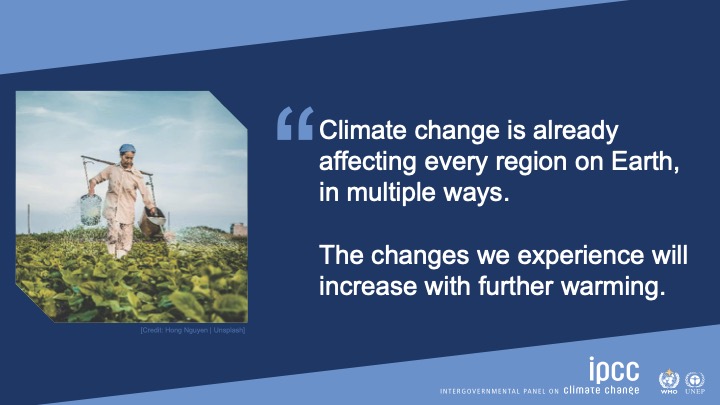
In the hundred and fifty pages document, they concluded that it is “unquestionable” that human activities have warmed the atmosphere, oceans, and land at an unprecedented rate over thousands of years. This situation has severely impacted the frozen water systems and the biosphere. They also state that the consequences are already affecting communities that have to withstand the rapid rise of the sea level and extreme weather such as heatwaves, heavy precipitation, or tropical cyclones.
The report warns that the global temperature will soon exceed 2 ºC “unless deep reductions in carbon dioxide (CO2) and other greenhouse gas emissions occur in the coming decades.” However, they clarify that “many changes due to past and future greenhouse gas emissions are irreversible for centuries to millennia, especially changes in the ocean, ice sheets and global sea level.”
Climate change represents a threat to our generation, and we are responsible for the future of the biosphere and civilization.
II. Mars interior revealed
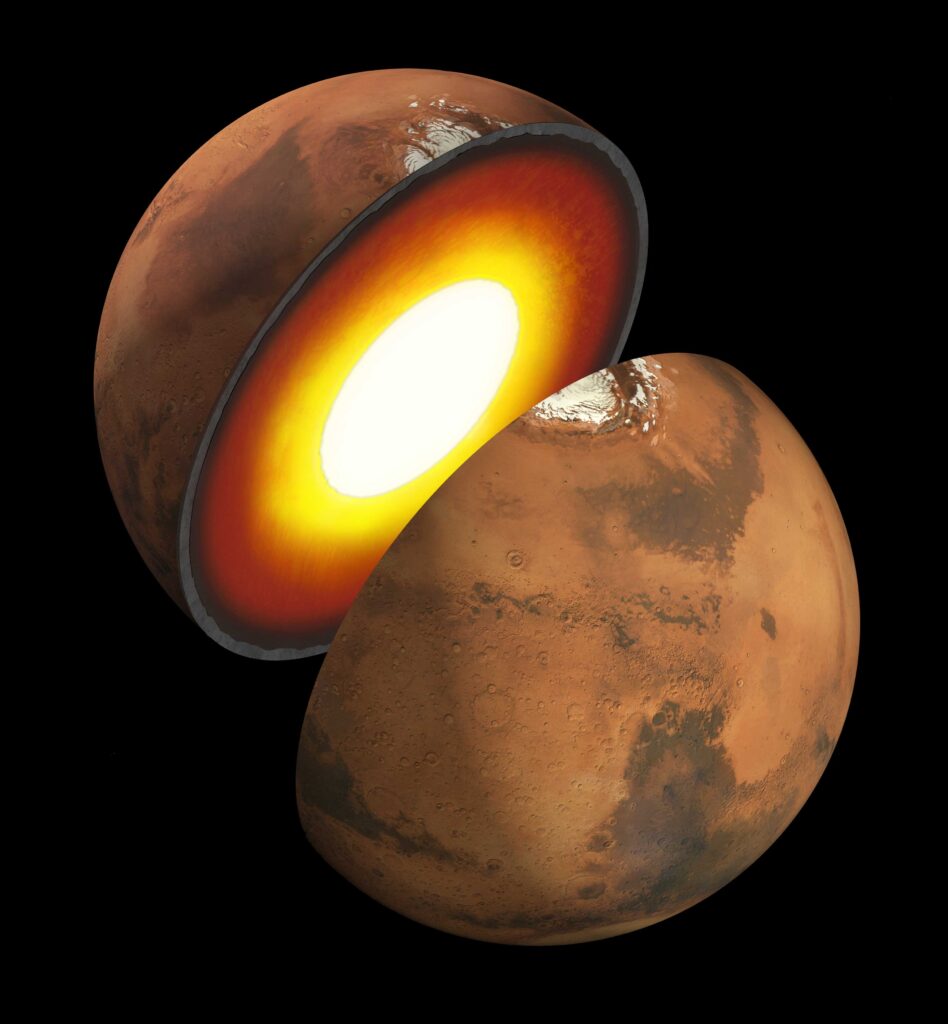
NASA Geologists have been investigating Mars’s interior since the robot-laboratory InSight arrived in 2018. In July 2021, they published three articles in Science reporting their findings on the structure of the planet.
InSight has been recording marsquakes data revealing a layered crust with either two or three interfaces, which can be up to 72 kilometers in depth; a mantle with a surprisingly thick lithosphere that lies close to 500 kilometers below the surface; and a huge liquid iron-nickel core enriched in light elements with a radius of nearly 1,830 kilometers. These findings suggest that Mars evolved differently from Earth. Read the full story in our featured article.
III. When did Vikings arrive in America?
The presence of Europeans in the American continent before Columbus is well known. Archaeologists have clearly identified a site in L’Anse aux Meadows in Newfoundland, Canada, where Vikings arrived and settled. The site is so important that UNESCO declared it as a world heritage in 1978. However, dating the Vikings’ arrival in America has been challenging.
In a groundbreaking study recently published in Nature, researchers estimated the year of the Viking’s arrival with unprecedented precision. They use an anomalous cosmic-ray event in AD 993 that rapidly increased the 14C in the atmosphere.
This unusual mixture of carbon isotopes appears synchronously in tree records worldwide. When detecting this anomaly in a tree, it is possible to determine the moment of its falling by simply counting the rings from there to the waney edge. And voila, looking into the trees used by the Vikings in their settlement site, the archeologists determined that in the year AD 1021, the Vikings had already set foot in America.
IV. Joung gut bacteria may help slowing aging
We dream of slowing the rate of aging but with a certain quality of life. Age-related neurodegenerative pathologies are a growing public health concern, while effective treatments remain scarce. Researchers predict that, by 2050, the percentage of aged individuals will exceed 21% of the population; therefore, achieving healthy aging should be considered a goal for society.
A study published in Nature Aging suggests that gut bacteria may be crucial to rejuvenation. The researchers found that microbiota transplantation from young mice into old mice reverses many age-related metabolic and cognitive behavior dysfunctions such as those related to learning and memory. Read our full report about the finding here.
V. New successful arrivals to Mars
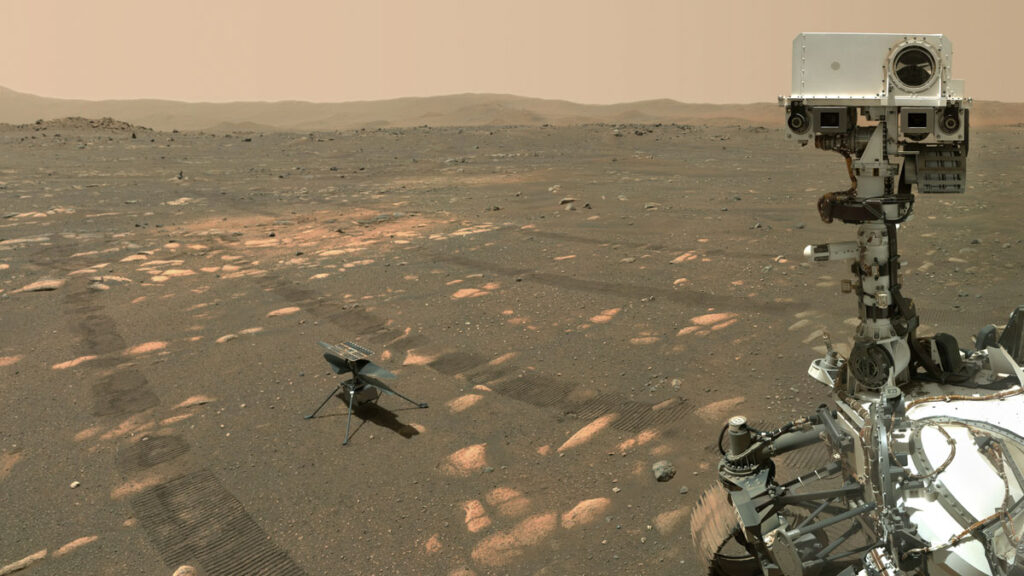
During summer last year, three missions from different countries were launched heading to Mars. NASA rover Perseverance with its drone-helicopter Ingenuity, the Chinese orbiter Tianwen-1 with its charming looking rover Zhurong, and the satellite Hope from the Mohammed bin Rashid Space Centre from the United Arab Emirates safely arrived at Mars in February.
What are the questions scientists are asking with these new Curiosity companions? You will find all the details in our article Seven minutes of terror.
VI. AI helped unveil Rembrandt’s painting lost piece
The famous Rembrandt painting The Night Watch has been exhibited for over 300 years with a missing piece. Yes, you read it!
In 1639, the Mayor of Amsterdam, captain Frans Banninck Cocq commissioned the artwork for the town hall. When it was ready, it stayed at the headquarters of the Dutch civil guard. In 1715, it was finally moved to the town hall triggering the tragedy. The painting was too big for the walls, so its borders were trimmed, and the “leftovers” were discarded.

Fortunately, Gerrid Lundens made a small copy of the painting. Although it is far from a replica, people and objects missing were there. Recently scientists used Lundents’ copy as a cheat sheet to train artificial intelligence to visualize the missing part and reproduce it in Rembrandt’s style. How? Read the full process in our article.
VII. The asteroid that killed the dinosaurs created the Rainforest
Solid evidence supports that the asteroid that made the Barringer Crater in Arizona, USA, helped the dinosaurs to become extinct 60 million years ago. But what happened after that? We know that massive extinction gave way to new species and a new face of the Earth.
Paleontologists have been tracing the rainforest evolution; it appears to have its origin after the massive extinctions. In an article published this year in Science, Mónica Carvalho and collaborators used thousands of fossilized pollen and leaves to characterize the changes in the Colombian forests to reconstruct what happened at the end of the Cretaceous.
They found differences in the species composition, which led them to infer how the whole environment structure evolved. They concluded that the event that killed the dinosaurs “triggered a long interval of low plant diversity in the Neotropics and the evolutionary assembly of today’s most diverse terrestrial ecosystem.”
Find a popular science article on the subject here.
VIII. Molecules of life found close to the center of the Milky Way
Early this year, in an article published in the Proceedings of the National Academy of Science, Scientists reported having found ethanolamine (H2N-CH2-CH2-OH) in a dense molecular cloud—close to the center of our galaxy—for the first time.
Ethanolamine is a natural occurrence in meteorites, which supports the hypothesis that these molecules of life could have been synthesized on asteroids and planets.
This time the chemistry surrounding the ethanolamine in the cloud revealed that it could have been synthesized right there, in space.
Where is this molecule found in living organisms?
Ethanolamine (H2N-CH2-CH2-OH) is frequently found in cell membranes in many species, particularly in every cell in humans.
Read the full story in our reportage.
IX. A billion years old fossil could be Earth’s oldest known multicellular organism
Paleontologists investigated one billion years old microfossils in sediments of the Loch Torridon, Scotland, consisting of a solid ball tightly packed or Bicellum brasieri. The sediments have preserved the fossils to the cellular level, revealing previously documented unicellular organisms and possible new organisms composed of two distinct cells.
If this find consolidates, it would be the oldest known fossil of a multicellular organism, changing the history of multicellular origin and evolution. Read the open access scientific paper here and a popular science note here.
X. Lessons learned on the second year of the Covid19 pandemic
The year 2020 ended with bad news and good news. The bad news was the tragic number of deaths left by the pandemic. The good news was the rapid development and clinical trials of anti-SARS-CoV-2 vaccine vaccines—many arrived with high effectiveness and hope.
Unfortunately, dealing with a pandemic escapes from the hands of science; it highly depends on how the technologies are used. It goes way beyond virologists and epidemiologists. The governments’ strategy, healthcare systems, economies, and the willingness of developing countries and corporations to help vaccines reach the entire population are crucial to end the pandemic.
Mayo Clinic has been publishing data on vaccine effectiveness by age, comparing the mRNA vaccines Pfizer-BioNTech and Moderna and the vector-based Janssen/Johnson & Johnson. Although severe side effects are rare (about 54 cases in a million doses), the site includes a complete review of all possible side effects.
Investigations on the Delta variant, identified in India in October 2020, showed being more infectious and resistant to available vaccines.
Researchers at Pasteur Institute in France investigated 109 patients finding that one dose of Pfizer and AstraZeneca was insufficient to neutralize the Delta strain and that a second dose covered up to 95%.
Recently, the Lancet published a study on the effectiveness of the Pfizer–BioNTech vaccine. They investigated 3.4 million individuals fully vaccinated between December 14 and August 8, 2021. They found that the efficacy against infectious non-Delta variants was 97% during the first month but decayed to 67% at five months. Concerning hospitalizations, it was 93% overall up to six months. For the Deltavariant, The effectiveness was 93% declining to 53% after four months.
Later in November, a new “highly transmissible — spreading several times faster than Delta” variant was identified in Botswana and South Africa. Researchers called it Omicron. The bad news is that this variant carries many mutations that modify its spikes in the virus, which may challenge the ability of antibodies to recognize it, neutralizing the action of the available vaccines.
Promising antivirus
During fall Pfizer and Merck announced they have developed effective antivirals. Paxlovid (Pfizer) showed to be able to cut hospitalizations by 89%, while Lagevrio (Merck) halved the risk of hospitalization, according to Nature. While these antivirals are still on clinical trials and the Food and Drug Administration “narrowly voted” on Dec. 1 to recommend authorizing Merck’s antiviral pill, on November the UK became the first country to take it the first step in approving Lagevrio on November 4.
Although the pandemics are apparently bringing more uncertainties than hope in the next year, one thing is for sure: we live in a global village that keeps getting smaller and smaller. If only a few developed countries are able to use the product of science, not sharing them with developing countries, ending the pandemic won’t be easy. The strategies should be as global as our economy.
References
IPCC, 2021: Climate Change 2021: The Physical Science Basis. Contribution of Working Group I to the Sixth Assessment Report of the Intergovernmental Panel on Climate Change [Masson-Delmotte, V., P. Zhai, A. Pirani, S.L. Connors, C. Péan, S. Berger, N. Caud, Y. Chen, L. Goldfarb, M.I. Gomis, M. Huang, K. Leitzell, E. Lonnoy, J.B.R. Matthews, T.K. Maycock, T. Waterfield, O. Yelekçi, R. Yu, and B. Zhou (eds.)]. Cambridge University Press. In Press.
Carvalho, M. R., et al. (2021). Extinction at the end-Cretaceous and the origin of modern Neotropical rainforests. Science, 372(6537), 63–68. https://doi.org/10.1126/science.abf1969
Boehme, M., et al. (2021). Microbiota from young mice counteracts selective age-associated behavioral deficits. Nature Aging, 1(8), 666–676. https://doi.org/10.1038/s43587-021-00093-9
Rivilla, V. M., et al. (2021). Discovery in space of ethanolamine, the simplest phospholipid head group. Proceedings of the National Academy of Sciences 118 (22) e2101314118; DOI: 10.1073/pnas.2101314118.
Khan, A., et al. (2021). Upper mantle structure of Mars from InSight seismic data. Science 373(6553), 434-438. DOI: 10.1126/science.abf2966
Knapmeyer-Endrun, B., et al. (2021).Thickness and structure of the martian crust from InSight seismic data. Science 373(6553), 438-443. DOI: 10.1126/science.abf8966
Stähler, S., et al. (2021). Seismic detection of the Martian core. Science 373(6553), 443-448. DOI: 10.1126/science.abi7730
Greicius, T. (April 1, 2021). NASA’s InSight Detects Two Sizable Quakes on Mars. NASA news.
Kuitems, M., et al. (2021). Evidence for European presence in the Americas in ad 1021. Nature. Published. https://doi.org/10.1038/s41586-021-03972-8
Comparing the differences between COVID-19 vaccines. (2021, August 20). Mayo Clinic. https://www.mayoclinic.org/coronavirus-covid-19/vaccine/comparing-vaccines
Tartof, S. Y., et al. (2021). Effectiveness of mRNA BNT162b2 COVID-19 vaccine up to 6 months in a large integrated health system in the USA: a retrospective cohort study. The Lancet, 398(10309), 1407–1416. https://doi.org/10.1016/s0140-6736(21)02183-8
Ledford, H. (2021, November 10). COVID antiviral pills: what scientists still want to know. Nature. Retrieved December 17, 2021, from https://www.nature.com/articles/d41586-021-03074-5
Illustration by Dana Dumea.
